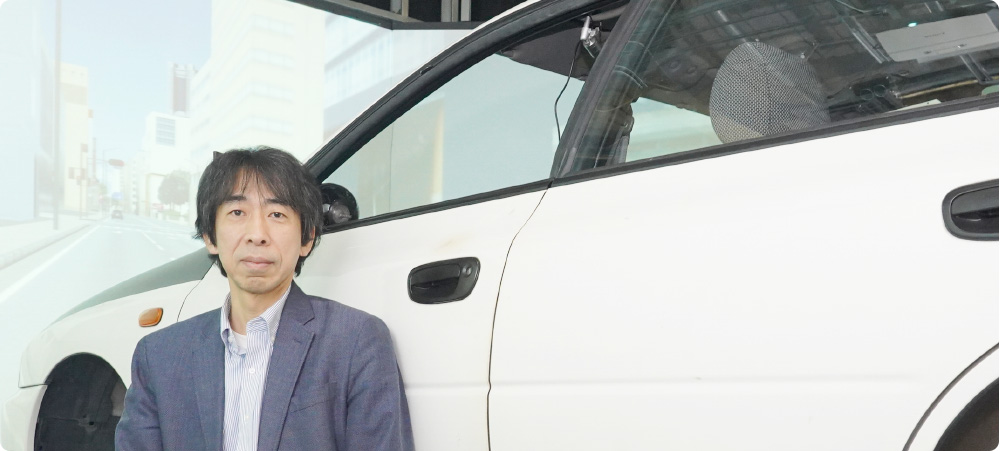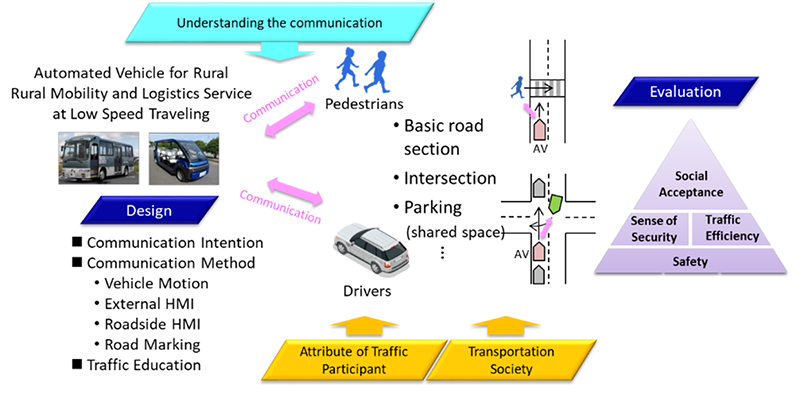
Position:Professor
email:daimon(at)ae.keio.ac.jp
Home Page:
http://www.daimon.she.ae.keio.ac.jp/site/main.html
Human Factors, Automotive Human Factors, Cognitive Behavioral Study, Traffic Behavior, Human–Machine Interface/Interaction, Automated Driving, Communication
We conduct basic research on human cognition and behavior in relation to automobiles and road traffic environments, including automated driving systems, applied research related to system design, and the evaluation of human assistance systems and their human–machine interfaces. We also undertake empirical research into the social implementation of these systems.
Human Factors and Ergonomics I, Human Factors and Ergonomics II, Human Factors and Ergonomics VI, Advanced Human Factors and Ergonomics 2
Research and technological development of automated vehicles has been being promoted for not only private vehicles (cars owned by members of the public) but also public transport shuttles and regional services. In order to implement such automated driving systems in society, research and technological development related to the required hardware and software is not sufficient; it is also necessary to research the interaction and communication between automated vehicles and the surrounding traffic participants. This research must be undertaken from the viewpoint of safety, security, and efficiency. We are conducting various studies into the design and technology of interaction and communication between automated vehicles and surrounding traffic participants(including pedestrians, bicycles, and other drivers), through field observations, test-track experiments, simulator experiments, and other methods. Moreover, we also aim to translate those research results into international standardization activities, in collaboration with the Japan Automotive Manufacturers Association and the Society of Automotive Engineers of Japan. In doing so we hope to contribute to the safe, secure, and smooth implementation of automated vehicles.

Fig.1-1: Research into communication between automated vehicles and the surrounding traffic participants

Left to right: Fig.1-2: Field observations, Fig.1-3: Test-track experiment, and Fig.1-4: VR experiments.
With the development of in-vehicle information and sensing technologies, automotive driving assistance systems alongside traffic management and control systems have been researched and developed with the aim of improving traffic safety and efficiency. We study and propose guidelines and recommendation related to not only the design of human–machine interface/interaction but also effective traffic management and control systems with a focus on human safety and traffic efficiency.
In the field of human factors and ergonomics related to various interactive tasks, including those related to automobiles and road traffic, human–machine interactions and interfaces have an important role in introducing suitable human performance and psychological actions. We are conducting fundamental research related to the design of such human–machine interactions and interface, based on human cognition and judgment, workload, and arousal characteristics by using biological signals such as electrocardiograms and brain waves.
Our laboratory uses research methods such as field observation in real environment, experimental design, and statistical analysis of measured experimental data, in order to study interactions between humans and systems and the interface that permits this interaction. Through these research activities, our laboratory develops resources that have the ability to propose system design recommendations and standards based on human characteristics, as well as the ability to plan and manage projects involving various engineers, researchers, and technologies.